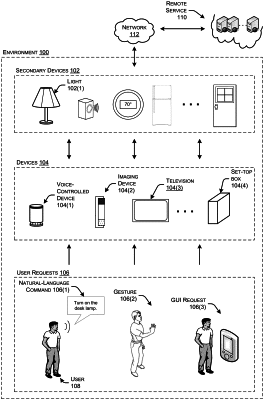| CPC G05B 15/02 (2013.01) [H04L 12/2803 (2013.01); H04W 4/80 (2018.02)] | 20 Claims |

|
1. A method comprising:
detecting, by a first electronic device, a presence, of a secondary device within an environment of the first electronic device;
establishing, by the first electronic device utilizing a first protocol adapter first electronic device;
establishing, by the first electronic device utilizing a second protocol adapter, a second connection between the first electronic device and a second electronic device, the second electronic device unable to connect to the secondary device;
sending, by the first electronic device utilizing the second protocol adapter, a first message indicating that the first electronic device is responsible for controlling the secondary device within the environment;
receiving, at the second electronic device, a request to change a state of the secondary device;
sending, by the second electronic device utilizing the second protocol adapter and based at least in part on the first message, a second message comprising an indication of the request to the first electronic device via the second connection;
receiving, by the first electronic device utilizing the second protocol adapter, the second message from the third electronic device representing the indication to change the state of the secondary device; and
based at least in part on receiving the second message, causing, by the first electronic device utilizing the first protocol adapter the secondary device to perform an operation associated with changing the state of the secondary device.
|